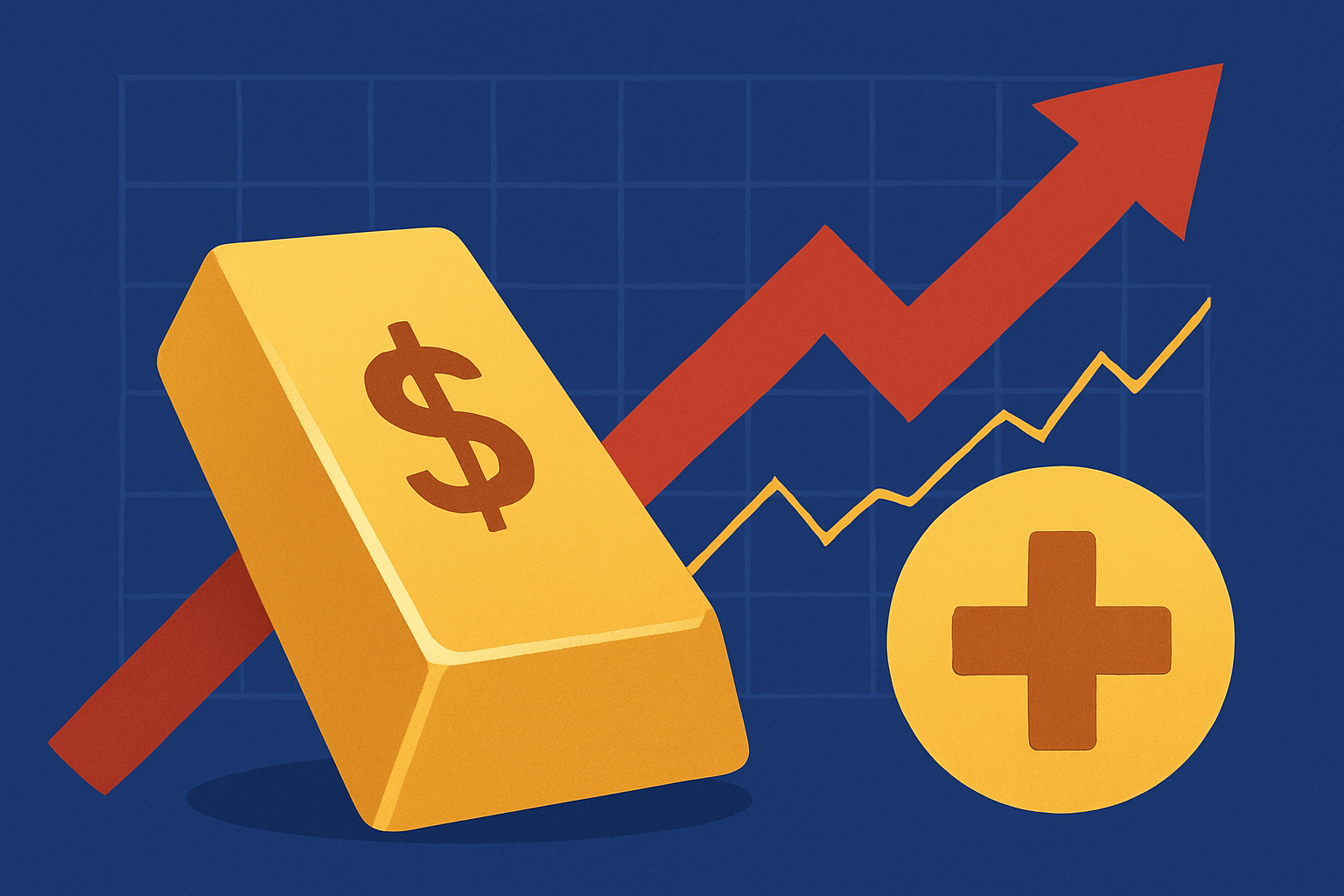Gold has reclaimed the spotlight as investors flee to safety. Futures for the yellow metal surged to an all-time high near US$4,392 per ounce, according to Kitco, fueled by renewed anxiety in credit and equity markets. With global macro risks resurfacing—from slowing growth and geopolitical flashpoints to persistent central bank uncertainty—investors are once again treating gold as the ultimate hedge against instability.
A Historic Flight to Safety
Gold’s latest rally underscores a broader market recalibration. The move toward record territory coincides with rising U.S. Treasury yields, volatile equity sessions, and renewed stress in the credit markets. In short, investors are seeking reliability in tangible assets while confidence in paper markets wanes.
Data from the World Gold Council (WGC) shows that central banks have continued accumulating gold at a historic pace, purchasing nearly 1,100 metric tons in the past year—the second-highest total on record. Much of this demand stems from emerging market central banks seeking to diversify away from the U.S. dollar amid geopolitical fragmentation.
At the same time, institutional and retail investors have ramped up positions in gold-backed ETFs. Bloomberg Intelligence reports that global inflows into gold ETFs rose by over $14 billion in Q3 2025, marking the strongest quarterly increase since the early pandemic rally of 2020.
Why This Matters for Investors
The latest move in gold isn’t merely a technical spike—it’s a macro narrative shift. Investors are recalibrating risk exposure as uncertainty deepens across multiple fronts:
- Central Bank Policy Ambiguity: The U.S. Federal Reserve has sent mixed signals on rate trajectories, while the Bank of Canada faces its own balancing act between inflation control and slowing growth.
- Geopolitical Strains: Escalating U.S.–China trade friction and instability in resource-rich regions are fueling demand for real assets.
- Equity Market Fragility: With major indices showing increased volatility and earnings guidance turning cautious, diversification through precious metals is regaining traction.
“Gold is reclaiming its role as a core portfolio stabilizer,” noted Bart Melek, Head of Commodity Strategy at TD Securities, in a recent client note. “The combination of strong central bank buying and investor positioning suggests the rally could have legs if inflation expectations re-anchor higher.”
Future Trends to Watch
- Central Bank Accumulation
Continued purchases by emerging economies such as China, India, and Turkey could further tighten global supply, adding to bullish pressure on prices. - Real Interest Rate Movements
Historically, gold tends to perform best when real (inflation-adjusted) yields fall. Should inflation remain sticky while nominal rates plateau, gold could find sustained support above $4,000. - Shift in ETF and Retail Demand
Renewed interest from institutional allocators and retail investors—particularly in North America—could accelerate capital inflows into physical and derivative gold products. - Mining Sector Upside
With spot prices hitting records, North American gold miners such as Barrick Gold (NYSE: GOLD) and Newmont Corporation (NYSE: NEM) may benefit from expanding margins, assuming production costs remain contained. - Currency Volatility
The recent weakness in the Canadian dollar and euro relative to the U.S. dollar has amplified local gold price gains, creating potential opportunities in regional gold producers and ETFs.
Expert Commentary
Analysts across major financial institutions agree that gold’s role is shifting from a defensive hedge to an offensive allocation tool. “In today’s environment, holding gold isn’t just about fear—it’s about strategic resilience,” said John Reade, Chief Market Strategist at the World Gold Council. “When both equities and bonds move in tandem, gold’s diversification power strengthens.”
The CME Group also reported record open interest in gold futures, suggesting institutional investors are using derivative exposure to position for continued upside. Meanwhile, retail trading data from Kitco shows sentiment tilted overwhelmingly bullish, with 68% of surveyed investors expecting higher prices over the next month.
Key Investment Insight
For investors seeking exposure, the current environment favors a balanced approach between direct bullion positions, mining equities, and gold-focused ETFs. Those already holding gold may consider rebalancing portfolios to lock in gains above $4,300, while long-term allocators could use short-term pullbacks as entry points.
The broader metals complex—particularly silver, copper, and lithium—may also benefit if safe-haven demand expands into real asset diversification themes.
In essence, gold’s surge isn’t just a reflection of fear—it’s a statement of confidence in scarcity and tangibility at a time when paper assets are under pressure.
Stay Ahead with MoneyNews.Today
As investors worldwide seek refuge from volatility and policy confusion, gold’s record-setting performance underscores the enduring value of real assets in modern portfolios.
Stay with MoneyNews.Today for daily coverage, expert analysis, and actionable insights on global markets, precious metals, and the investment strategies shaping tomorrow’s economy.





